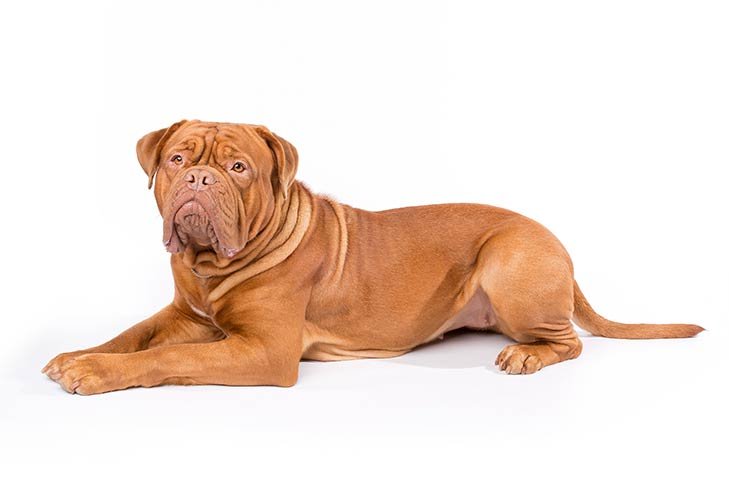History

The Dogue de Bordeaux is known to have been well known in France as early as the 14th century particularly in the Southern France region of Bordeaux. The breed is known to predate the English Bulldog and the Bull Mastiff. When the breeding began, admirers of the breed wanted the purity of the breed to remain. For the same reason while breeding it was important to keep the face free from the black mask that is so characteristic to an English Mastiff. A dogue de Bordeaux used to come in two different varieties – Dogues (a large dog) and a Doguins (a smaller breed, does not exist anymore). According to historians, the Dogue de Bordeaux originates from the Tibetan Mastiff or the Greco Roman Molossoid that were used for wars. The various classifications – Parisian, Toulouse and Bordeaux – of a Dogue de Bordeaux is known to have originated from the areas where they were bred and also on the type of work they were bred for. At the end of the Middle Ages, it was Raymond Triquet who formed a Dogue de Bordeaux club and saved the breed. It was in 2008 that the breed was recognised by the AKC.
Personality and Temperament
Bordeaux dogs is strong, intelligent and loyal.

Bordeaux dogs get along with children and other pets, when raised together. They don’t get along with other dominant breeds.
Hair, Care and Grooming
The coat is short and soft. The Bordeaux dog needs only an occasional bath and brushing.
Health
Bloat, or gastric dilatation and volvulus (GDV), is a serious concern in the Dogue de Bordeaux. Owners should educate themselves to recognize the signs that bloat could be happening, and know what actions to take if so. Heart disease, cancer, orthopedic issues (such as hips and elbows), and epilepsy are also issues of concern in the breed. Responsible breeders will screen their stock for conditions the breed can be prone to. As with all breeds, a Dogue de Bordeaux’s ears should be checked regularly for signs of infection, and the teeth should be brushed often.
Training and Activity
Bordeaux dogs need consistent, gentle, respectful training. They are best owned by people with experience with dominant dog breeds.

Bordeaux dogs need to be walked a few times each day.
Feeding
An exceptionally large and heavy dog, this breed requires a similarly large diet, with normal monitoring of weight fluctuations like any other dog. This dog, however, does not require an exceptionally large diet because it’s not a very vigorous exerciser.






